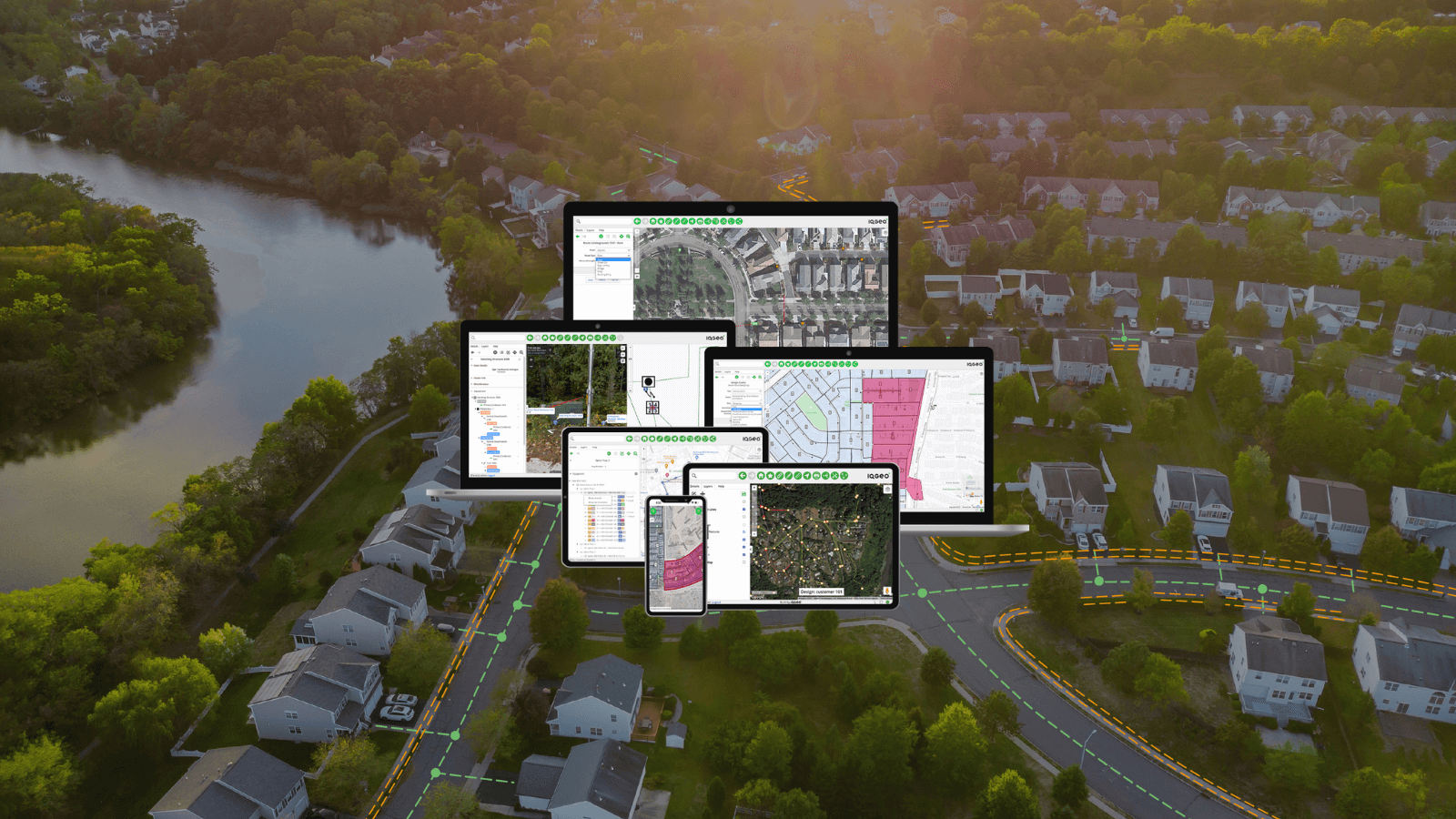Last month I attended the Euroheat & Power Congress in Torino, Italy to discover the latest market and technology trends shaping the district heating and cooling market and connect with peers in the industry.
The congress took place at the Fiat Lingotto site, built in the 1920s as the largest and most modern car manufacturing plant in Europe. It’s an amazing architectural building that boasts an unmatched car production facility. The 500m-long, five-story building had a volume of one million cubic meters and was equipped with a rooftop test track. The factory was closed in 1982 and converted in 1989 into a modern complex, with concert halls, theatre, shopping arcades, a hotel, and a convention center. The rooftop track was retained and can still be visited.
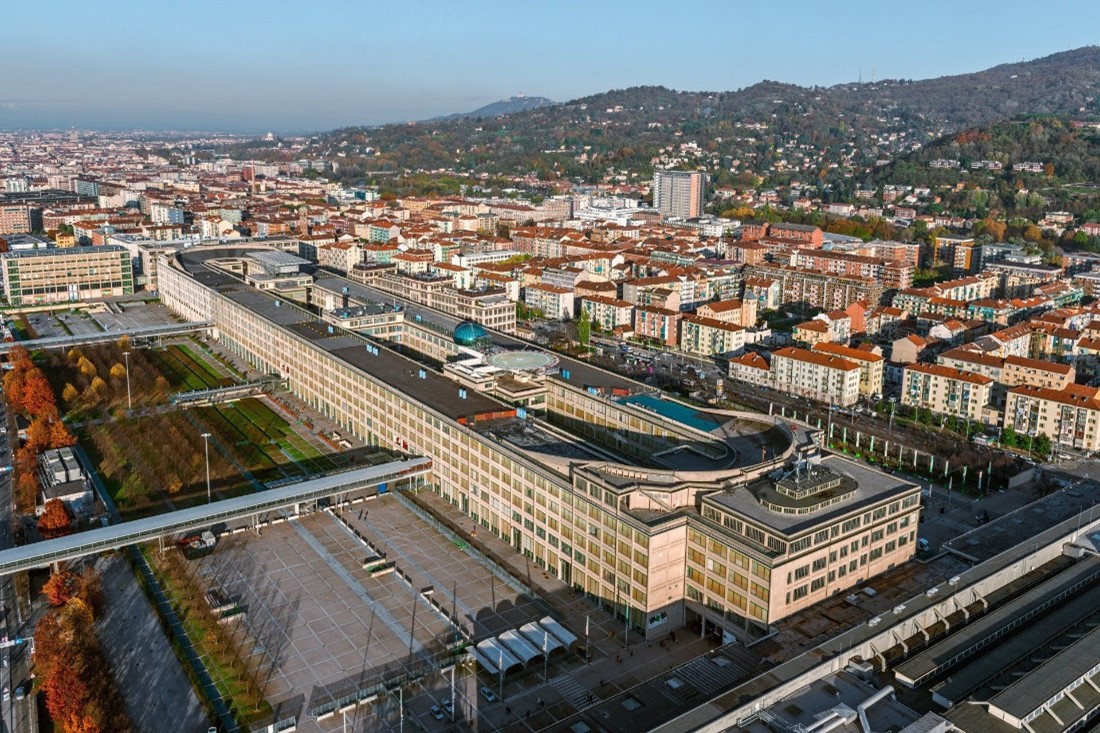
Fiat Lingotto site in Torino, Italy.
The momentum for change towards a better future
In many ways, the Fiat Lingotto site is a nice metaphor for the changes we are seeing in the district heating industry. The Fiat building has been reshaped and repurposed for the future in the same way that the energy sector is transforming today. We are experiencing momentous change due to the energy crisis and the increased political pressure to decarbonize the heating and cooling sector, covered in Europe’s ‘FIT for 55’ climate package. The momentum for change is building and this was reflected in the increased interest in this years’ Euroheat & Power Congress, which had its largest turnout ever with more than 450 industry professionals from across Europe.
Euroheat & Power presented the 2023 edition of the District Energy Market Outlook: A comprehensive analysis on DHC state of play in Europe.
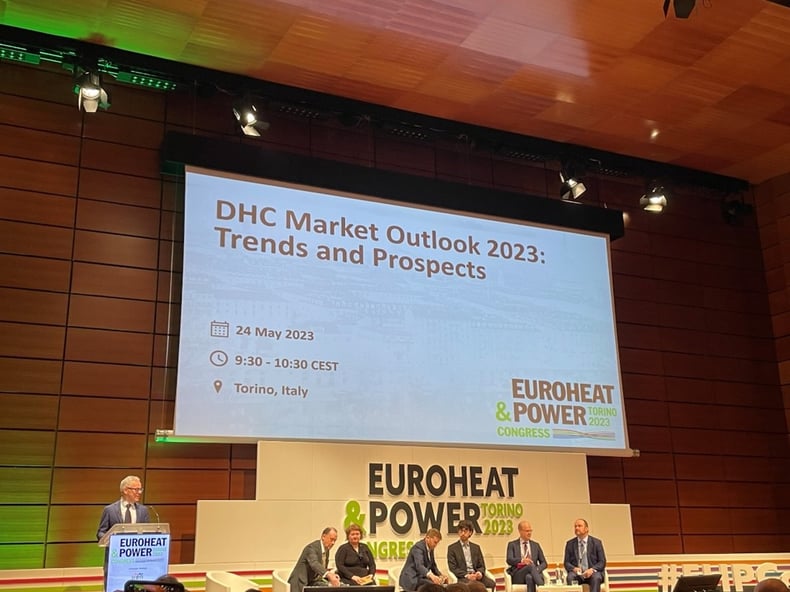
Euroheat & Power presenting its latest report findings.
District Heating and Cooling Market Outlook 2023: Insights &Trends report
The survey identified nearly 190,000 kilometers of district heating network pipes with a total capacity of about 300GWth. The modernization of existing district heating and cooling infrastructure represents a huge opportunity to decarbonize the heating supply of the 70 million citizens connected to district heating and cooling systems across Europe1.
Additionally, over 5 million new households are expected to be connected to district heating infrastructure by 20301. By any standard, this is tremendous market growth. This growth is driven by network expansion and new network developments based on national objectives and ambitions from the sector to reach the national energy and climate goals of individual countries.
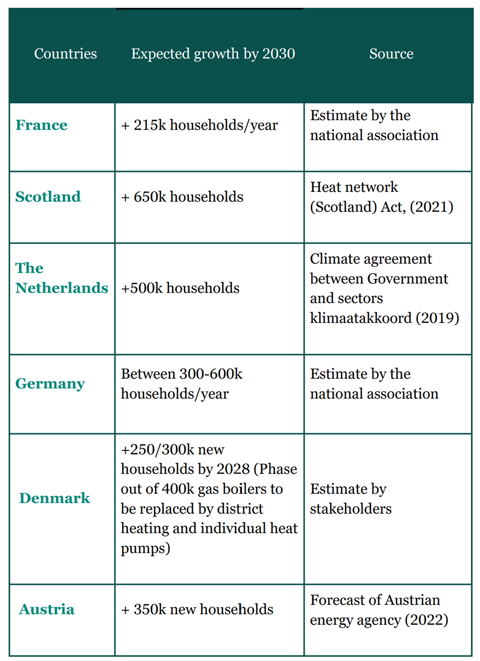 Source: DCH Market Outlook 2023 from Euroheat & Power
Source: DCH Market Outlook 2023 from Euroheat & Power
An excellent example is the Torino District Heating system, which is the largest in Italy and one of the largest in Europe. The Torino District Heating network currently serves more than 500,000 people, with a network that extents over 6,800 km and is still expanding. The Piemonte region, with its capital in Torino, is a densely populated area that represents 1,000 municipalities of a total 8,000 in the whole of Italy. A significant increase of district heating and cooling connections is also expected throughout Italy. Several hundred municipalities with populations above 45,000 inhabitants are undergoing compulsory comprehensive heating and cooling assessments as part of the ‘Fit-for-55’ package. Given their success thus far, the Piemonte region can serve as a pilot area for other regions in the country and across Europe.
Source: DCH Market Outlook 2023 from Euroheat & Power
A new era for District Heating and Cooling solutions
Building on transformational growth, the conference hosted multiple panel sessions on various topics and I was impressed by the scope of the conversations.
On one hand, it can be said that district heating is a “down-to-earth” industry, with large scale projects that impact the public space when trenches are open, streets are blocked, and traffic rerouted for the installation of district heating pipes. But on the other hand, it’s incredibly high-tech as we learned about the solutions that drive the digital twins and AI algorithms that optimize the network operations. This includes cloud based customer care and billing systems, and the necessary hardware to capture field data from sensors and digital meters.
IQGeo’s Comsof Heat software also plays its part in this digital revolution as we help companies and municipalities with map based smart auto-design software to accelerate the planning and design of new developments and expand existing networks. Additionally, IQGeo’s workforce management tools are there for the long-term, supporting construction, operations, and network maintenance well into the future.
“Sector coupling”, is a hot theme in the energy world and was mentioned in several panel sessions. It may be a buzz word, but it did get people thinking about how we need to work together to create an efficient integrated energy system based on renewable energy.
District cooling across the borders
The elephant in the waiting room is district cooling. In another panel session we left Europe and had a look at the potential of district cooling in Asia and South America. Countries like Thailand, Vietnam, Malaysia, Indonesia and India have a huge potential for cooling. Global warming is having an increasingly damaging impact on these countries and a district cooling strategy is more efficient than individual split unit air-conditioning systems. In South America, Brazil is the sleeping giant that may wake up soon and begin implementing district cooling at scale.
Overcoming the challenges with district heating and cooling networks
To accelerate our energy transition, there will be many technical and political barriers to the realization of district heating and cooling networks. The political drive is present, but policies are lagging behind and are delaying projects. There is certainly still room for improvement. Another often heard barrier is the lack of technically skilled people in the industry. This can be tackled by attracting young, motivated and enthusiastic people into this high-tech sector which is entering an exciting period and offering job certainty through their entire career. Re-use of knowledge, sharing best practices and standardization of processes will further improve efficiency of new projects and avoid wasteful and time consuming mistakes from the past.
The Fiat Lingotto site in Torino is now an exciting and inspiring building reinvented for a new world and we can do the same with our energy future. The momentum and creativity present at the Euroheat & Power Congress is a reflection of the amazing things to come as the industry continues to grow. The IQGeo team will be working hard over the next year to play our part in this change with our Comsof Heat software and I’m certainly looking forward to the next Congress in Rotterdam in 2024.
To learn more about the growing maturity and expansion of the DHC market, read our blog “The levels of district energy network design maturity”.
Footnotes:
1 – Source for quoted statistics is the DHC Market Outlook 2023 report from Euroheat & Power. Access the report on the Euroheat and Power news page.

Former Product Manager at IQGeo
Similar articles:

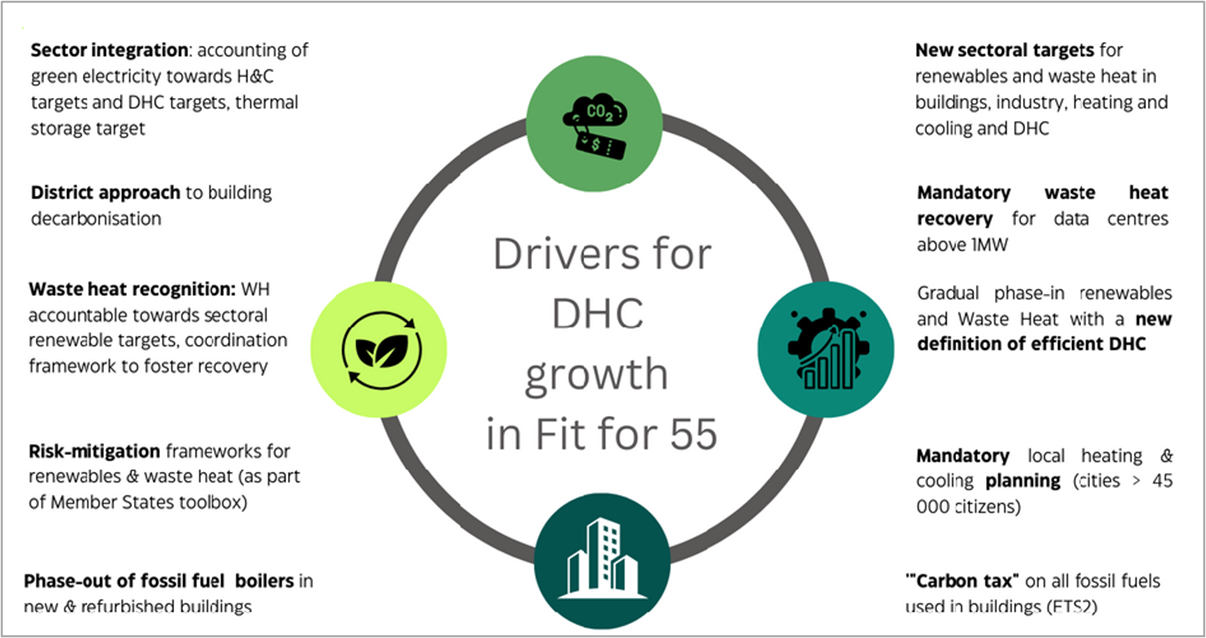
 Previous
Previous





